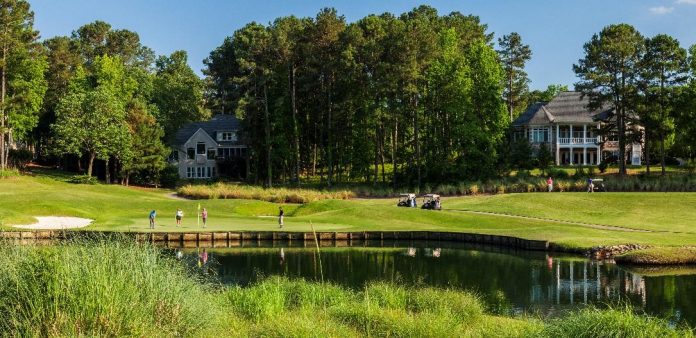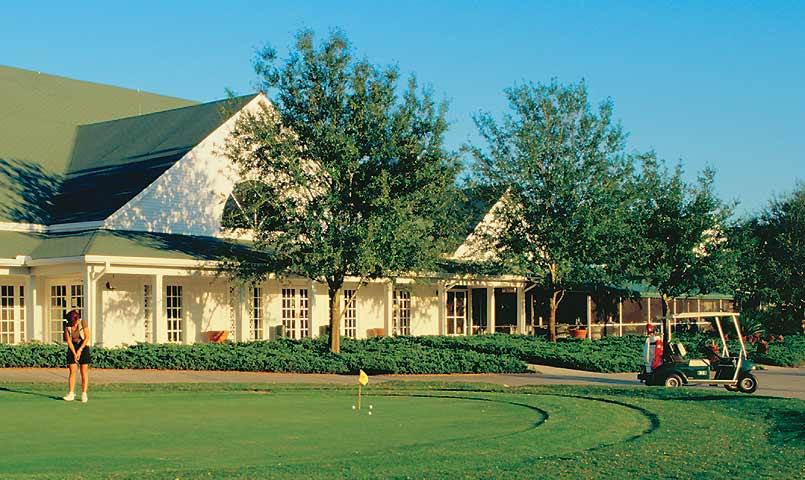
Vero Beach, Florida – Golf and retirement. Two magic words that are music to the ears and future plans of many!
Those two activities are linked, especially with Baby Boomers. As more and more start the retirement process, golf is still vital consideration for where and how they will live.
As the saying goes, rumors of golf’s demise are greatly exaggerated. The game is still big business, driving more than $84 billion in economic activity across the U.S. in 2016, according to a recent World Golf Foundation study, and a 22% increase over 2011. The game also supports nearly 1.9 million jobs worth $58.7 billion in compensation.
And according to a survey recently conducted by Private Communities Registry (PCR), the market leader in researching amenity-rich, master-planned lifestyle communities, golf is still high on the list of desires of new retirees looking to stay busy, engaged, and healthy.
Think about it and it’s not a surprise golf is a huge, vibrant industry. Not with 10,000 people turning 65—the traditional retirement age—every day in the U.S. It’s also not a revelation that golf communities are devoting millions of dollars in capital expenditures every year to update and upgrade their courses and related amenities, such as practice facilities, clubhouses, and fitness centers.
At Boot Ranch in Fredericksburg, Texas, not only did course architect and former PGA Tour star Hal Sutton oversee a $2 million renovation of the course he originally designed 12 years ago, but the 2000-acre property with a capacity of 450 residences invested another $1 million in an 18-hole, 35,000-square-foot putting park aimed at all ages of golfers and golfers-to-be.
At Red Ledges in Heber, Utah, the community’s Jack Nicklaus-designed golf course recently added a new set of “Golden Bear” tees, placed to help new golfers—including many retirees who now have time to take up the game—ease into their new playing experience. Red Ledges already has a 12-hole Golf Park, also designed by Nicklaus, that offers a low-key, fun outing for golfers big and small, novice to expert. The Park also is used for soccer, Frisbee, dog-walking, and kite-flying, showing how golf course land can do double, and triple duty and welcome a range of fun and games.

And at one of the biggest communities of them all, Reynolds Lake Oconee between Atlanta and Augusta, Georgia, Nicklaus is overseeing a total renovation of his award-winning Great Waters course, one of six 18-hole layouts in the 12,000-acre property.
Around the country, other courses are investing in new clubhouses—redesigned for more flexible use while meeting the expanding desires of ever-more-active members—along with new high-tech practice and training facilities, putting courses, and training for its pro shop staff in everything from merchandising to club fitting.
According to Ben Keal, Vice President of PCR, “as golf membership ages, communities need to need to re-address the sport and how to make it more appealing to a younger demographic and families. They need to outrun attrition.”
Nearly 60% of the communities in Private Communities Registry’s database offer golf as an amenity, while 74% of potential retirees, when asked what kind of club membership they’d be interested in, specify golf.
“Golf continues to be very viable and attractive to home buyers seeking a retirement option,” Keal explains, “The golf investment typically happens at higher-end, luxury communities, increasing the game’s economic impact. Golf was also one of the most important community amenities/activities offered, outpolling, among others, boating and marinas, spas, and racquet sports, including tennis and pickleball.”
Golf is viewed as an integral part of the fitness and wellness options within a community—something that can be played now and well into the future by family members of all ages—while providing a critical social element that few other sports and games can match: camaraderie.
Interest in golf and golf communities also can be seen in new golf home construction, which climbed to $7.2 billion in 2016 after dropping to $3.1 billion seven years ago.
www.privatecommunities.com.











Leave a Reply